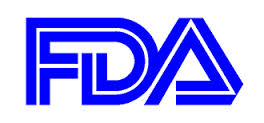 On July 9, 2012 the Food and Drug Administration Safety and Innovation Act (FDASIA) was signed into law. This Act is intended to expedite the development and review of drugs targeting serious or life-threatening indications. A drug awarded the FDA Breakthrough Therapy designation is:
On July 9, 2012 the Food and Drug Administration Safety and Innovation Act (FDASIA) was signed into law. This Act is intended to expedite the development and review of drugs targeting serious or life-threatening indications. A drug awarded the FDA Breakthrough Therapy designation is:
The Difference between Breakthrough Therapy Designation and Fast Track
On the surface, Breakthrough Therapy appears similar to Fast Track designation, which facilitates the development and review of drugs for unmet medical conditions. Both designations cover submissions under both CDER and CBER. Where these two designations differ is in the prerequisite data needed for the filing.
For Breakthrough Therapy designation, the drug must treat a serious or life-threatening condition and preliminary clinical evidence must indicate a substantial improvement on relevant endpoints over currently available therapies.
Fast Track requires only that pre-clinical or clinical data demonstrate the ability to address the unmet medical need being targeted.
Accelerated Approval for a Reduced Time to Market
Accelerated Approval can be used to speed the development of drugs awarded Breakthrough Therapy designations; conferring NDA approvals using a “surrogate endpoint” that is reasonably likely to indicate a clinical benefit. This can be particularly useful in getting cancer treatments into the hands of oncologists quicker than traditional methods.
FDA has recently published the Breakthrough Therapy “Guidance for Industry”, which can be found here (PDF will open in a new window).
In brief, FDA has pledged an organizational commitment to:
The introduction of this Breakthrough Therapy designation has been met with a warm reception by industry. As of September 6, 2013 CDER has received 83 requests, granting 26 and denying 34. CBER has received 10 requests, however none have yet been granted.
Some recent Breakthrough Therapy designation awardees include Boehringer Ingelheim’s volasertib, being evaluated for the treatment of previously untreated AML in patients aged 65 or older, Syndax Pharmaceuticals’ entinostat, being evaluated for the treatment of locally recurrent or metastatic estrogen receptor-positive breast cancer, and GSK and Genmab’s ofatumumab, being evaluated for the treatment of CLL in combination with chlorambucil.
This regulatory pathway can be effectively utilized by BioPharma companies both large and small developing therapeutics for oncology indications, thereby reaching a wider population of patients in need as quickly as possible.